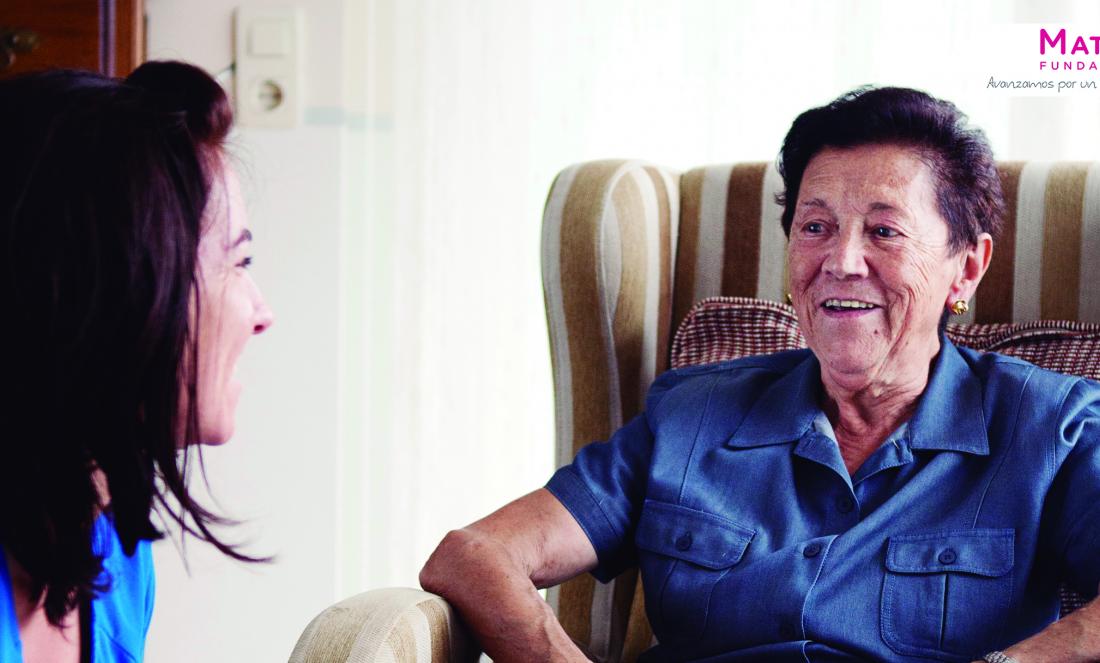
Walking towards new models of home care. The Cuadrilla de Añana experience
In a few lines I will try to explain the Etxean Ondo project, its development in homes and more specifically its implementation in Cuadrilla de Añana.
When we were approached to carry out the project, it was an area that was totally unknown to all of us, so first of all we began to get to know the area, its peculiarities... and what we found was something totally different from the territory of Gipuzkoa where we had previously developed the project in five of its municipalities.
Cuadrilla de Añana, in general terms, is one of the seven squares into which the territory of Alava is divided and its total population does not reach 9,000 inhabitants. There are 10 Town Halls in the Cuadrilla. It is a very rural and extensive territory with a great dispersion. Perhaps one of the best known sites are the most important salt flats on the Peninsula, the Salinas de Añana.
The project, has as a reference and basis for the transformation, the application of the Model of Attention Centred on the Person. It places the person at the centre of the intervention, guaranteeing their rights, promoting their autonomy and therefore the exercise of personal decision-making and consequently full participation in the care plans.
It considers the continuity and coordination of support as the core of the intervention. This articulation of services and support is carried out in coherence with the rest of the intervening agents. And of course with coordination between social services and health professionals, to achieve a personalized, comprehensive and continuous care.
For this reason, the methodology applied throughout the process is that of case management, that is, a reference professional (case manager) who accompanies the individuals and families throughout their care process and coordinates all interventions. He or she is responsible for carrying out and accompanying the development of the care and life plan. The person is only one, his or her changing circumstances and the typology and intensity of the interventions have to vary fluently just as life does.
The sample we are working with is 178 people. 67% have some degree of dependency, 28% live alone and the rest mostly with their spouse or children. Naturally the majority of the population are women, 70%.
In this case, and as a distinctive element of Gipuzkoa, we also have 24 people under 65 with disabilities.
The initial phases involved full knowledge of the people participating in the project through the completion of a life history, a psychosocial assessment of the family caregiver, as well as the accessibility of the home. It would be important to highlight the great contribution of the Life History, its biography, for many aspects that, in addition, are transferred by the people themselves and professionals. The use of the life history as an entry point for personalisation, as well as the design and subsequent consensus of the care and life plan of each person, is significant.
Work is currently underway to develop and implement the care and life plans. In other words, a response is being given both to the needs of people and their families and to their interests and preferences.
It is important to highlight that throughout the process training sessions are being carried out with all the agents involved in the home. These sessions have various objectives such as providing knowledge, raising awareness and facilitating the exchange of information. To make visible the need for coordination between the professionals themselves.
It is clear that the presence at home of the professionals favours a better knowledge of the different situations and circumstances and improves the possibilities of information and guidance.
In the set of supports and services, it is worth highlighting the positive impact that the Acompaña Programme is having, both in its line of respite for the family caregiver and in the orientation actions in the home itself.
The identification of strengths, even in situations of fragility, vulnerability and dependence, implies the recognition that each person is unique and a protagonist in their life project.
The experience is giving us, even without having finished the project, an important impact on people's satisfaction, the approach of an integral intervention based on social and health coordination, the possibility of giving answers to the wishes and preferences. A fundamental element in this is the flexibility of the service portfolio and the way in which it is provided.
In short, the implementation of new models of home care means that we have to consider a path which, today, is to respond to the preferences expressed by the majority of citizens, which is to continue to live in their usual environment even when circumstances of fragility and/or dependence occur. This transformation represents a challenge for the planning of services.

Add new comment